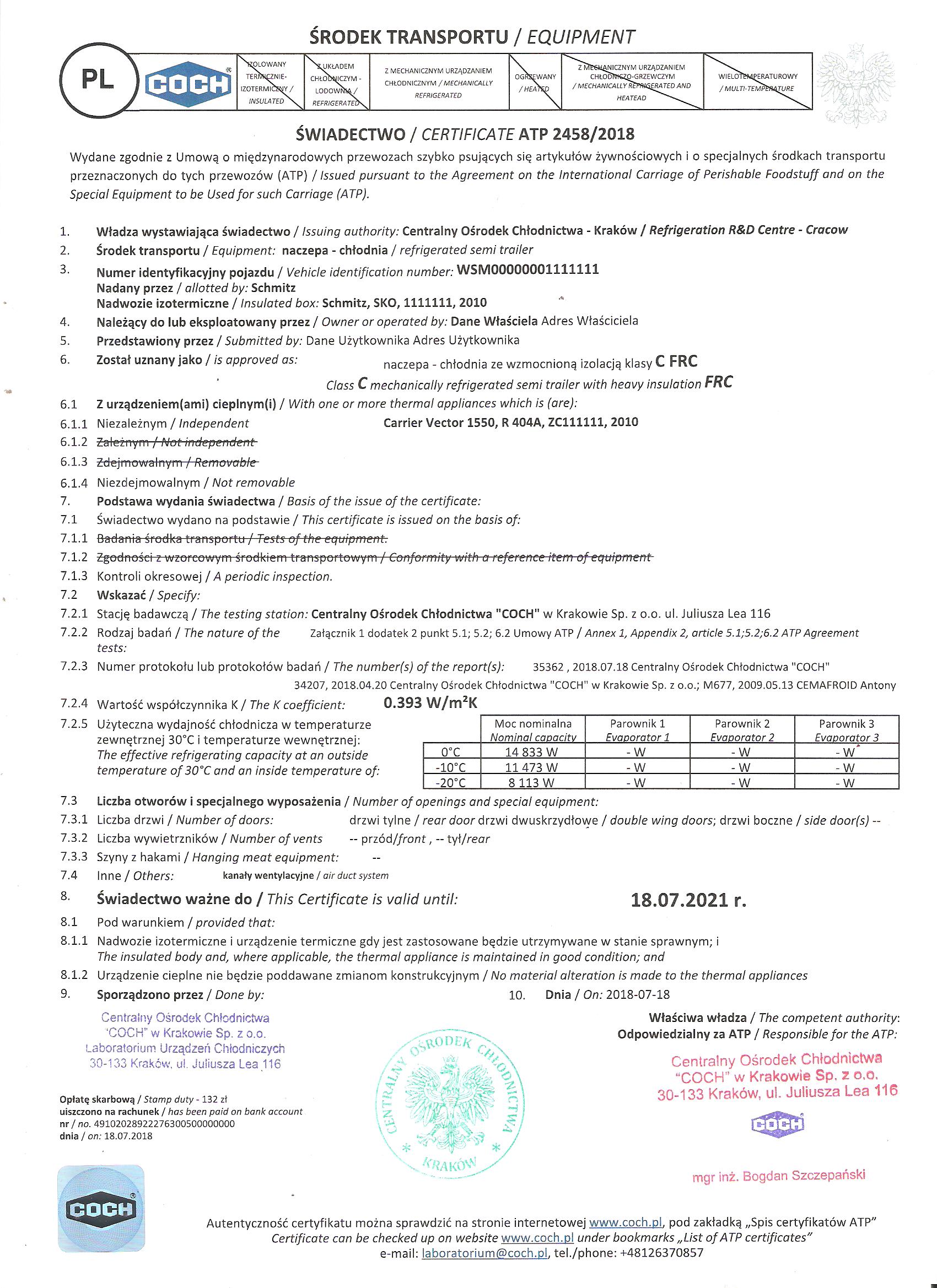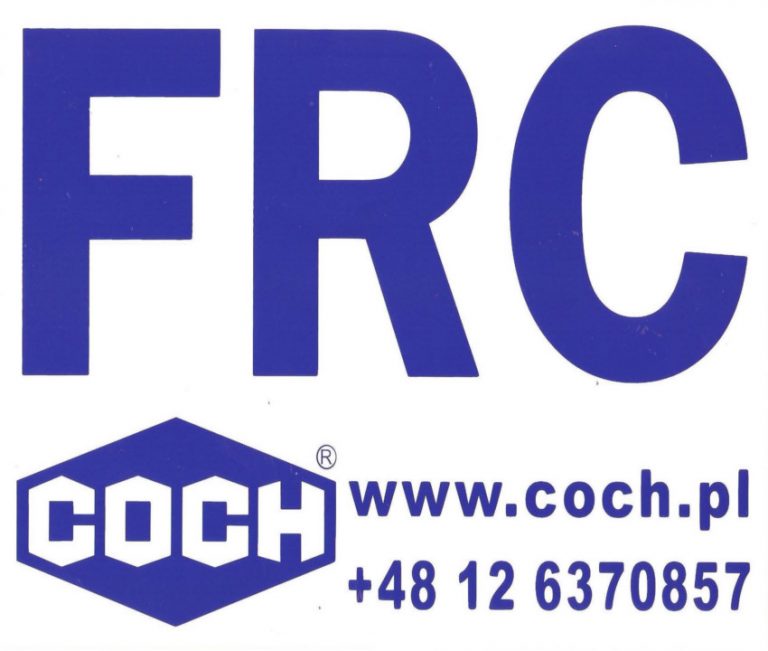ATP agreement - general information
ATP plaque
ATP Certificate
ATP Classification
ATP mark
Periodic inspection
Food vs. ATP
Parties to the ATP Agreement
The ATP Agreement (Agreement on the International Carriage of Perishable Foodstuffs and on the Special Equipment to be Used for such Carriage) is the key agreement governing the international transportation of perishable foodstuffs. Adopted within the framework of the United Nations Economic Commission for Europe (UNECE), the ATP Agreement is a fundamental set of rules for the safe, efficient and sustainable transportation of such goods around the world.
You will find here key information on the definition and scope of the Agreement, requirements for specialized transport equipment, and procedures related to carriage and documentation.
To better understand how the ATP Agreement affects the international trade of foodstuffs and its benefits and requirements, we encourage you to click on the relevant tiles next to it.
Details of the ATP Agreement
ATP agreement - general information
The Agreement on the International Carriage of Perishable Foodstuffs and on the Special Means of Transport for such Carriage (ATP) was drawn up in Geneva on September 1, 1970. Poland has been a signatory to this agreement since 1984.
The ATP Agreement and its annexes are regularly updated by the Working Party on the Carriage of Perishable Foodstuffs of the United Nations Economic Commission for Europe, known as WP11.
The agreement specifies the conditions that must be met by means of transportation intended for transporting perishable foodstuffs. It includes definitions, standards, testing conditions, how special vehicles are marked, and the required temperatures during transportation.
The application of regulations under the ATP Agreement is mandatory for the transportation of all frozen products and certain chilled products.
By 2018, 50 countries had joined the ATP Agreement.
States parties to the Agreement strive to maintain the quality of transported food and develop international trade in this area.
The types of transportation covered by the Agreement are:
- transportation by road,
- transportation by rail, and
- transportation by sea (as long as it is carried out over a distance of less than 150 kilometers and without transshipment by means of transportation used for land transportation or land transport, or between two such land transports).
ATP Certificate
The ATP certificate is a document confirming that a vehicle intended for the transport of perishable foodstuffs meets the technical requirements specified in the ATP Agreement. This document specifically applies to isothermal, refrigerated, and heated vehicles used in international transport.
The ATP Agreement is an international convention aimed at ensuring appropriate standards for the transport of perishable goods. It was adopted in 1970 under the auspices of the United Nations Economic Commission for Europe (UNECE).
To obtain an ATP certificate, a vehicle must undergo technical inspections carried out in accredited testing facilities. During these inspections, the following are checked:
- Thermal insulation properties of the body,
- Efficiency of refrigeration or heating systems (depending on the type of vehicle and goods being transported).
Validity Period of the ATP Certificate
- A new vehicle receives a certificate valid for 6 years.
- After 3 years, a periodic inspection is required.
- After 6 years from the issuance of the original certificate, the vehicle must undergo a full technical inspection to obtain a new ATP certificate.
Regular technical inspections of the body and refrigeration/heating systems are essential to maintain the validity of the document.
The ATP certificate is recognized in all countries that are signatories to the ATP Agreement, including most European countries and some countries outside Europe, such as Russia and China.
COCH is an accredited entity authorized to perform inspections in compliance with the ATP Agreement and to issue certificates for vehicles intended for the international transport of perishable foodstuffs.
An example of the ATP certificate issued by COCH is shown below:

Plaque and classification
Sample Plate Pattern:
In the ATP agreement (A – Agreement; T – Transport; P – Perishable), transport means are classified according to their purpose and equipment as well as the thermal transmittance coefficient “K.”
The first letter indicates the type of transport means:
- I – Isothermal
- F – With mechanical refrigeration device – Refrigerated
- C – Heated transport
- R – With cooling system – Cold room
- B – With mechanical cooling-heating device
The second letter corresponds to the type of thermal insulation:
- R – Reinforced insulation
- N – Normal insulation
The third letter indicates the temperature class:
- A to F – For refrigerated vehicles
- A to D – For cold rooms
- A to D – For heated transport
- A to L – For vehicles with cooling and heating device
The letter X in the fourth position indicates that the transport means is equipped with a removable or dependent thermal device.
Examples of Refrigerated Vehicle Markings and Corresponding Transport Temperature Ranges and Thermal Transmittance Coefficients K:
- FNA – From +12°C to 0°C, K ≤ 0.7 〈W/m²K〉
- FRB – From +12°C to -10°C, K ≤ 0.4 〈W/m²K〉
- FRC – From +12°C to -20°C, K ≤ 0.4 〈W/m²K〉
ATP mark
ATP Identification Mark
The ATP identification mark consists of:
- Classification Mark (e.g., FRC)
- Certificate Expiry Date (e.g., 25-06-2021)
The ATP identification mark features dark blue letters on a white background.
- Letter height requirements:
- Classification Mark: At least 100 mm
- Expiry Date: At least 50 mm
- For smaller transport means with a total weight not exceeding 3.5 tons, the letter heights can be reduced to:
- Classification Mark: 50 mm
- Expiry Date: 25 mm
The ATP inspection marking should be placed in the upper front corners of the thermally insulated transport means.
The identification mark must be removed as soon as the transport means no longer meet the ATP Agreement requirements.
The information on the ATP marking (classification type and expiry date) must be consistent with the specifications on the related ATP certificate.

Periodic inspection
Periodic Inspection of Refrigerated Transport Means According to the ATP Agreement
Periodic inspections of refrigerated transport means, as mandated by the ATP agreement, are required regularly starting from 6 years after the vehicle’s date of manufacture and then every 3 years thereafter. Exceptionally, inspections may also be conducted upon request by the competent authorities.
During these inspections, key parameters are checked, including:
- The efficiency of the refrigeration unit in cooling the vehicle body to the appropriate temperature within a specified time frame.
- The condition of thermal insulation.
- The integrity of door seals.
- The thickness of the walls.
- The functionality of the thermostat.
A successful inspection results in the issuance of an ATP certificate, allowing the vehicle to continue operating in its current classification for another three years.
These inspections are carried out by trained inspectors at specialized testing stations, such as the Central Office of Refrigeration (COCH), using appropriate measuring equipment.
Food - classification
Transport temperatures above 0°C include classes: FRC, FRC/X, RRC, RRX, FRB, FRB/X, RRB, RBB/X, FNA, FNA/X, RNA, RNA/X.
| Produkt | Maximum temperature |
|---|---|
| Raw milk | +6°C |
| Red meat and big game (other than red offal). | +7°C |
| Meat products, pasteurized milk, butter, fresh dairy products, (yogurt, kefir, cream, fresh cheese), ready-to-eat prepared raw vegetables and vegetable products, concentrated fruit juice and fish products not listed below. | At +6°C or at the temperature indicated on the label and/or shipping documentation. |
| Game (other than big game), poultry, rabbits. | +4°C |
| Red offal. | +3°C |
| Ground meat. | At +2°C or at the temperature indicated on the label and/or shipping documentation. |
| Unprocessed fish, mollusks and crustaceans6. | On melting ice or at melting ice temperatures. |
When milk is collected from the farm for direct processing, the temperature may rise during transport to +10°C. In any form.
Except for products fully processed by salting, smoking, drying or sterilization.
Fresh cheese means unripened (unripened) cheese, ready for consumption within a short period after production, which has a limited shelf life.
Raw vegetables shredded, sliced or otherwise reduced in size, but excluding those that have only been washed, peeled or cut in half.
Excluding live fish, live mollusks and live crustaceans.
Temperaturę transportu od 0°C do -10°C obejmują klasy: FRC, FRC/X, RRC, RRX, FRB, FRB/X, RRB, RBB/X, FNA, FNA/X, RNA, RNA/X.
| Product | Maximum temperature |
|---|---|
| Butter | -10°C |
| Butter and concentrated fruit juice. | See point 7. |
For the listed deep-frozen and frozen food products that are intended for immediate processing upon arrival, their temperature may be allowed to rise slowly during transportation so that they arrive at the destination having a temperature no higher than that requested by the shipper and indicated in the transportation contract. This temperature may not exceed the highest temperature permitted for the food product in a refrigerated state listed in Annex 3 of the ATP Agreement.
Transport temperatures below -10°C include classes: FRC, FRC/X, RRC, RRC/X.
| Product | Maximum temperature |
|---|---|
| All frozen food products (except butter). | -12°C |
| Fish, fish products, mollusks and crustaceans frozen or (deep) quick-frozen and all other deep-frozen food products. | -18°C |
| Ice cream | -20°C |
Parties to the contract
- Albania
26.01.2005 - Andora
14.07.2008 - Arabia Saudyjska
13.01.2015 - Austria
01.03.1977 - Azerbejdżan
08.05.2000 - Belgia
01.10.1979 - Białoruś
03.08.2001 - Bośnia i Hercegowina
12.01.1994 - Bułgaria
26.01.1978 - Chorwacja
03.08.1992 - Czarnogóra
23.10.2006 - Czechy
02.06.1993 - Dania
22.11.1976
- Estonia
06.02.1998 - Finlandia
15.05.1980 - Francja
01.03.1971 - Grecja
01.04.1992 - Gruzja
30.11.1998 - Hiszpania
24.04.1972 - Holandia
30.11.1978 - Irlandia
22.03.1988 - Kazachstan
17.07.1995 - Kirgistan
22.10.2012 - Litwa
28.04.2000 - Luksemburg
09.05.1978 - Łotwa
06.02.2003
- Macedonia
20.12.1999 - Maroko
05.03.1981 - Mołdawia
11.09.2007 - Monako
24.10.2001 - Niemcy
08.10.1974 - Norwegia
14.07.1979 - Polska
05.05.1983 - Portugalia
15.08.1988 - Rosja
10.09.1971 - Rumunia
22.04.1999 - San Marino
17.05.2016 - Serbia
12.03.2001
- Słowacja
28.05.1993 - Słowenia
06.08.1993 - Stany Zjednoczone
20.01.1983 - Szwecja
13.12.1978 - Tadżykistan
28.12.2011 - Tunezja
03.04.2007 - Turcja
21.12.2012 - Ukraina
25.07.2007 - Uzbekistan
11.01.1999 - Węgry
04.12.1987 - Włochy
30.09.1977 - Wielka Brytania
05.10.1979
Safety confirmed by accreditation
View the offer of the Certification Department
Contact information
Below you will find a list of contact information for COCH Laboratory.
General Affairs
Laboratory manager
mgr inż. Dorota Niedojadło
+48 12 637 08 57
+48 667 600 635
laboratorium@coch.pl
















































